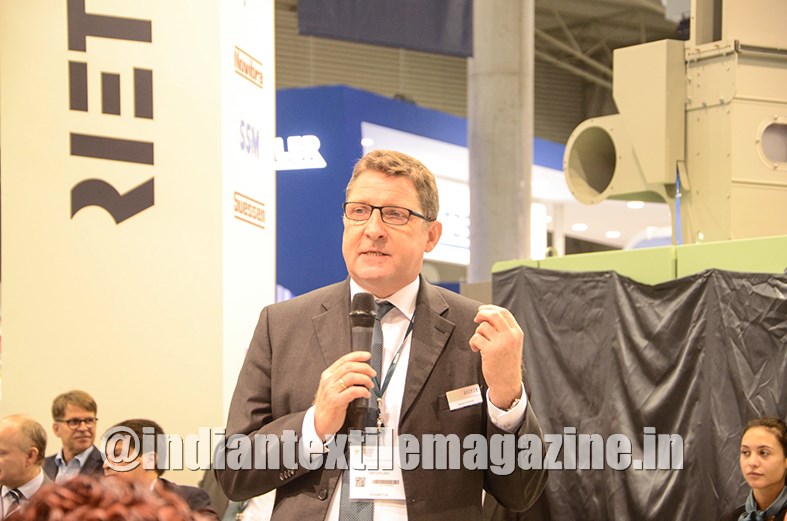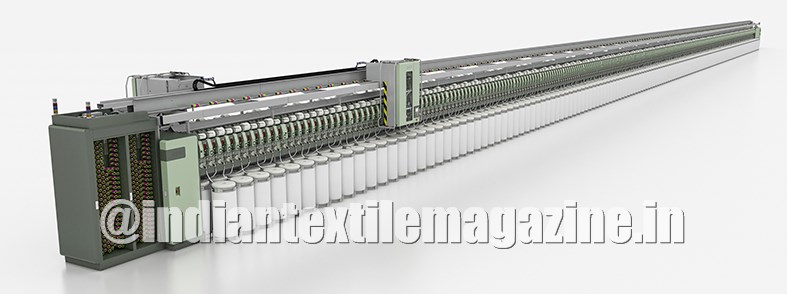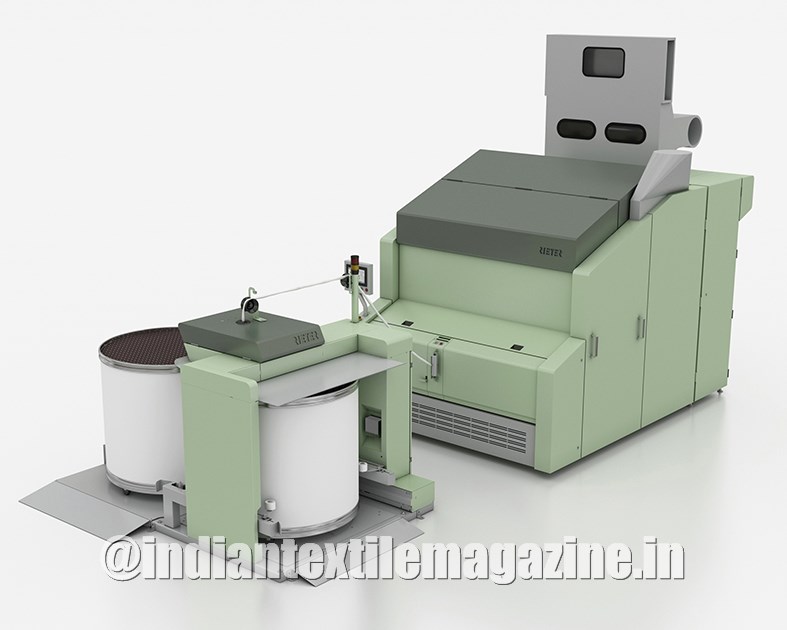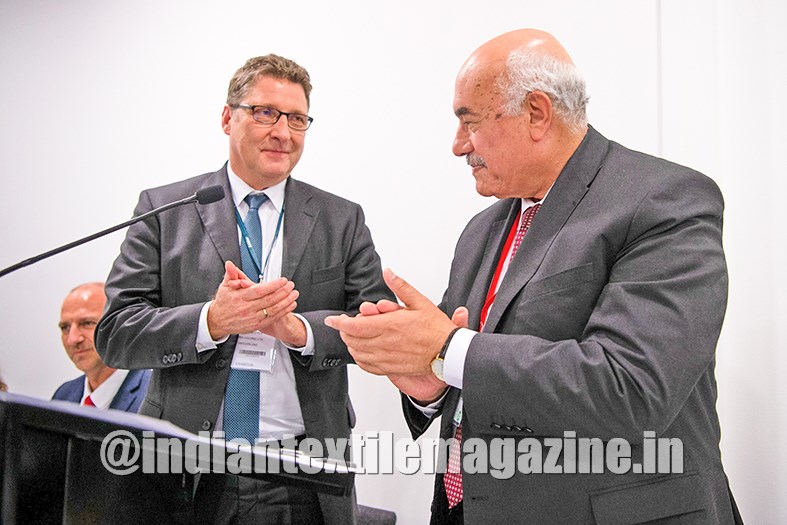At ITMA 2019, Rieter showcased innovations for all four spinning processes that are established on the market. These innovations are designed to reduce raw material, energy and labor costs while also increasing yarn productivity and quality required in each case. Solutions to increase the flexibility of the spinning mill were presented, as also two solutions for the production of innovative yarns.

In fiber preparation, the blowroom VARIOline with the new UNIClean B 15 brings significant improvements in terms of energy consumption and the cleaning result for all spinning processes. The same applies to the new high-performance card C 80, which offers an unrivaled level of productivity.
To increase the cost effectiveness of the ring spinning and compact spinning process, Rieter revealed the new comber E 90, the new roving frame F 40, the piecing robot ROBOspin and three different compacting units that can easily be installed on and removed from a ring spinning machine: COMPACTdrum, COMPACTapron and COMPACTeasy.
Innovations that bring considerable improvement in efficiency for the rotor spinning process were also presented. The draw frame module RSB-Module 50 can be used in combination with the high-performance card C 80 and can be configured to a highly efficient direct process with the new semi-automated R 37 or the fully automated R 70. The new, cost-effective rotor spinning machines are characterized by low energy consumption, high productivity and high machine availability with low raw material costs.
There were innovations for the air-jet spinning process too: The process for producing a very attractive yarn made of 100% combed cotton was presented. This process is extremely cost-effective, despite the combed out short fiber content.
The new innovations for the four spinning processes were supplemented by two new functionalities of ESSENTIAL: ESSENTIALorder and ESSENTIALconsult, which are available to all Rieter customers free of charge with the purchase of a new machine. In addition to the existing modules ESSENTIALmonitor, ESSENTIALmaintain and ESSENTIALpredict, the next steps were demonstrated: ESSENTIALlab for integrating laboratory data into the spinning mill management system, ESSENTIALoptimize, the intelligent recipe management system, and ESSENTIALautomate for integrating the transport and logistics systems.
After Sales
The growing digital service offering complements new solutions for optimizing the installed base. With the PSM Drafting Motor, Rieter After Sales offers a significant improvement on the machines G 33 and K 44; and with the Energy Saving Support Disc it offers the possibility to make considerable energy savings on rotor spinning machines.
The Rieter Group’s component manufacturers also introduced further innovations for day-to-day operations, such as the Bräcker ring traveler C1 ELM udr and the new SOLIDRING B 188 from Suessen. In preciforce, SSM presented a system for optimizing the bobbin build-up on precision winding machines. SSM also revealed another yarn innovation: fancyflex is a technology for manufacturing slub yarn for textured yarns.
Rieter awarded large Egyptian contract
The Rieter Group signed contracts with Cotton & Textile Industries Holding Company, Cairo (Egypt), at ITMA 2019, covering seven projects that entail a total of 180 million Swiss francs. The contract comprises delivery of compact- and ring-spinning systems over the next two years.
This order is part of a comprehensive modernization program of the Egyptian textile industry, and the order intakes are anticipated to be realized in 2019 with sales posted in the 2020-2021 financial years.
The contracts were signed by Dr. Ahmed Moustafa Mohamed, Chairman, Cotton & Textile Industries Holding Company, and Dr. Norbert Klapper, CEO, Rieter.
Dr. Klapper was very pleased at the formal signing of contracts: “We would like to thank our Egyptian business partners for the confidence they are placing in Rieter by awarding us this contract. Rieter has been the partner of choice of the Egyptian spinning industry for decades. We are delighted to be given the opportunity of making such an important contribution to the modernization of the Egyptian textile industry.”


